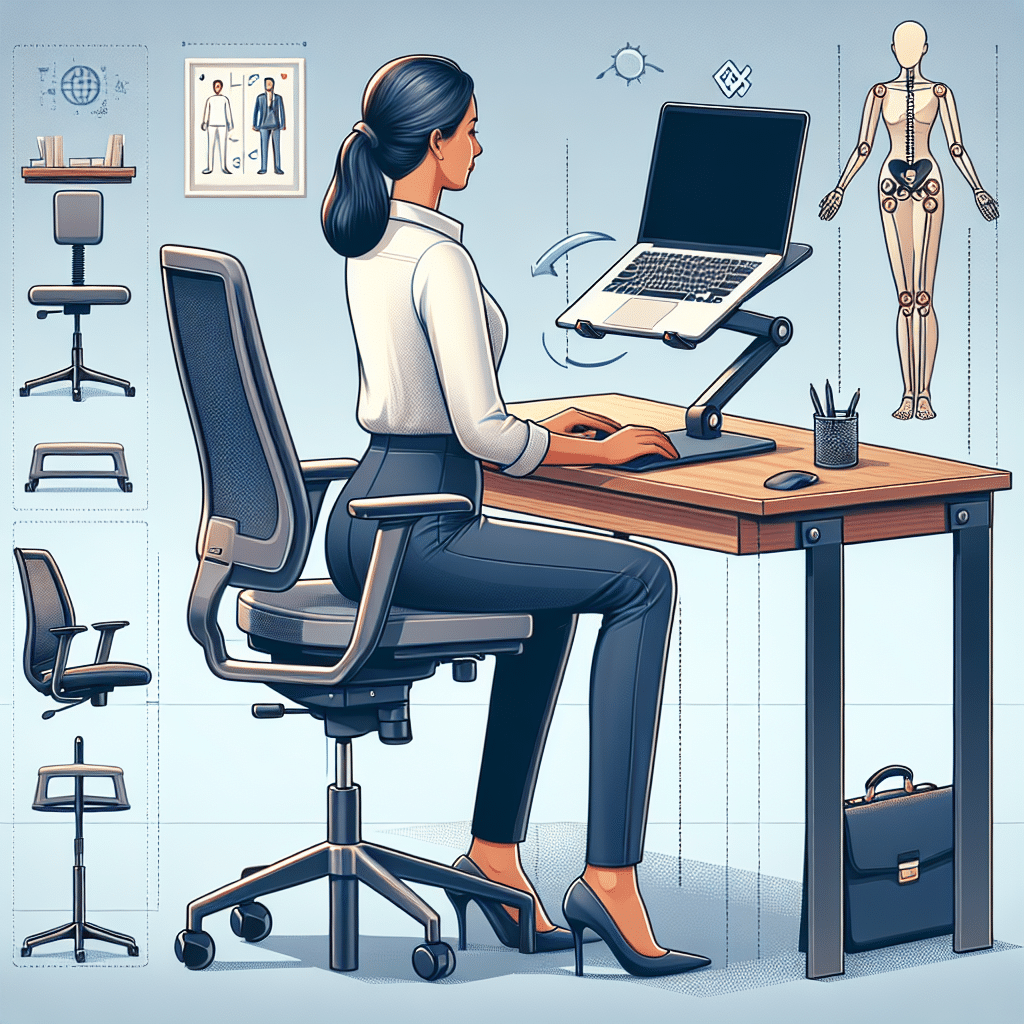Understanding Good Posture
Good posture is crucial for overall well-being, particularly when working long hours at a laptop. Poor posture can lead to physical ailments such as back pain, shoulder tension, and even headaches. Maintaining an ergonomic position while working can enhance productivity and reduce discomfort. A significant factor in achieving good posture is the setup of your workspace, especially when utilizing laptop stands.
The Importance of Proper Alignment
Achieving proper alignment while working on a laptop is fundamental. Your monitor should be at eye level, while your keyboard and mouse should be positioned to keep your wrists straight and not overly extended. Laptop stands are an effective tool in this regard, as they enable users to elevate their laptops, promoting a healthier angle for typing and viewing.
Proper Height
When using a laptop stand, the ideal height is one where your eyes naturally fall on the top third of the screen without tilting your head forward or leaning upwards. For most users, this means positioning the screen height between 15 to 20 inches above your seated position. Adjustable stands allow users to tailor the height according to their individual requirements, enhancing comfort and reducing strain.
Benefits of Laptop Stands
-
Reduced Neck and Shoulder Strain: By elevating the laptop screen to eye level, a laptop stand can significantly reduce neck and shoulder strain. When you’re looking down at a lower screen, the muscles in your neck and shoulders can become overworked, leading to discomfort and potential injury over time.
-
Improved Posture: Laptop stands encourage an upright sitting position. When your laptop is at a suitable height, it promotes a natural spinal curvature, preventing slouching. Users often find themselves sitting up straighter, which contributes to long-term spinal health.
-
Better Airflow for Cooling: Elevating your laptop not only benefits your posture but also improves airflow. Most laptops are designed with ventilation underneath; using a stand can prevent overheating, ensuring that your laptop operates efficiently.
Selecting the Right Laptop Stand
Choosing the best laptop stand involves considering various factors:
Material
Laptop stands come in various materials, including aluminum, plastic, and wood. Aluminum stands tend to be more durable and offer better heat dissipation. Additionally, wooden stands can add a touch of elegance to your workspace while providing stability.
Adjustability
Opt for adjustable or multi-angle stands that allow you to customize the height and angle of your laptop. This is key for varying tasks, whether you’re typing, watching videos, or participating in video calls. The ability to change angles can prevent eye strain and allow better ergonomic positioning.
Portability
If you frequently work from different locations, consider a lightweight, foldable stand that is easy to carry. Many portable options are designed to be compact without sacrificing stability.
Enhancing Ergonomics with Accessories
While laptop stands are fundamental for promoting good posture, combining them with additional ergonomic accessories can maximize comfort.
External Keyboard and Mouse
Using an external keyboard and mouse keeps your wrists in a neutral position and allows you to adjust the angles of both your keyboard and screen independently. Look for options with wrist support to prevent strain during long hours of typing.
Footrests
Using a footrest can further enhance your seating position. It helps keep your feet flat on the ground, promoting circulation and reducing pressure on your lower back.
Best Practices for Laptop Use
-
Take Breaks: Implement the 20-20-20 rule, which encourages taking a break every 20 minutes to look at something 20 feet away for 20 seconds. This practice reduces eye strain and refreshes your focus.
-
Adjust Your Chair: Your chair should support your lower back and allow your feet to stay flat on the ground. A chair that adjusts in height and back support will complement your laptop stand by providing a comprehensive ergonomic solution.
-
Stay Hydrated: Remember to drink plenty of water during long work sessions. Staying hydrated helps maintain focus and clarity, which indirectly supports good posture by keeping you alert and less likely to slouch.
Exercises to Complement Laptop Use
Incorporating exercises into your routine can further help maintain good posture. Here are a few suggestions:
Neck Stretches
Lower your chin to your chest and hold for 15-30 seconds. Then, tilt your head to one side, allowing the weight of gravity to deepen the stretch. Perform this on both sides to relieve neck tension.
Shoulder Shrugs
Lift your shoulders towards your ears, hold for a few seconds, and release. Repeat this 10 times to alleviate built-up tension in your shoulders.
Chest Openers
Stand or sit up straight, interlink your fingers behind your back, and slowly pull your arms back while squeezing your shoulder blades together. Hold this position for a few seconds to expand your chest and reverse the forward hunch often created by laptop use.
Resources for Further Education
Numerous resources are available for those wanting to delve deeper into ergonomic practices and the implications of posture on productivity and health. Websites like the Occupational Safety and Health Administration (OSHA) provide substantial information on workstation ergonomics. Additionally, ergonomic specialists and physical therapists can offer personalized advice tailored to individual workstation setups.
Conclusion
Good posture through the use of laptop stands, proper accessories, and mindful practices can drastically enhance your comfort and productivity at work. With the right approach and tools, achieving a health-conscious workspace is within reach. Prioritize ergonomic setups, and integrate healthy habits into your routines to ensure your well-being is consistently supported.
